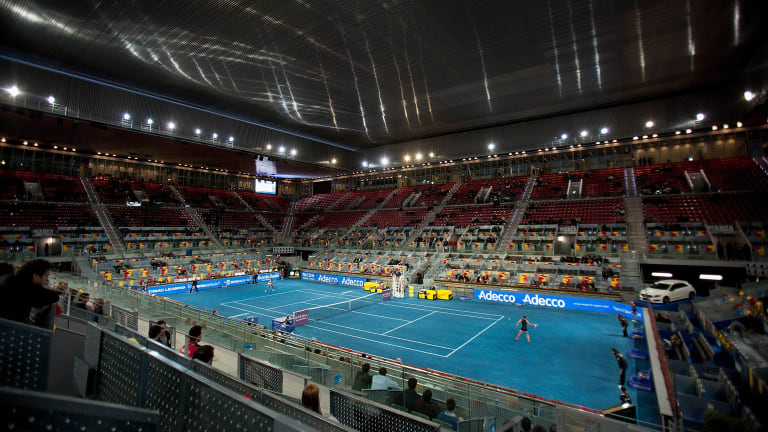Madrid, Spain
The Volley: Blue clay, best-of-three—can Madrid’s Cradle of Innovation lead to more changes in tennis?
By May 06, 2022Madrid, Spain
Andrey Rublev overcomes fever and praises doctors after winning Madrid Open for the first time
By May 06, 2024Madrid, Spain
Andrey Rublev is the 'most proud' he's ever been after defying adversity in Madrid victory
By May 05, 2024Madrid, Spain
Andrey Rublev rallies, then outlasts, Felix Auger-Aliassime to win Madrid title
By May 05, 2024Madrid, Spain
Big finals don’t get much tighter, or better, than Iga Swiatek and Aryna Sabalenka's melee in Madrid
By May 05, 2024Madrid, Spain
Preview: Andrey Rublev, Felix Auger-Aliassime seeking a turnaround in Madrid final
By May 04, 2024Madrid, Spain
Iga Swiatek saves three match points to beat Aryna Sabalenka in Madrid Open final
By May 04, 2024Madrid, Spain
Iga Swiatek topples Aryna Sabalenka in heavyweight title clash for first Madrid Open crown
By May 04, 2024Madrid, Spain
Preview: Iga Swiatek, Aryna Sabalenka run it back with another all-Top 2 Madrid final
By May 03, 2024Madrid, Spain
Andrey Rublev beats Taylor Fritz to reach Madrid Open final against Felix Auger-Aliassime as Jiri Lehecka joins injured list
By May 03, 2024Madrid, Spain
The Volley: Blue clay, best-of-three—can Madrid’s Cradle of Innovation lead to more changes in tennis?
Celebrating the 10-year anniversary of the wackiest week in tennis history, positing why the sport is slow to embrace change, and offering ideal innovations yet to come.
Published May 06, 2022
Advertising
Advertising

"That Nadal and Djokovic both (relatively) underperformed but went on to make the final of Roland Garros lent credence to their complaints: it’s not me, it’s blue."
© Getty Images
Advertising

Serena Williams slid past the blue-clay complaints to win the Madrid title in 2012, but others were less impressed.
© 2012 Getty Images